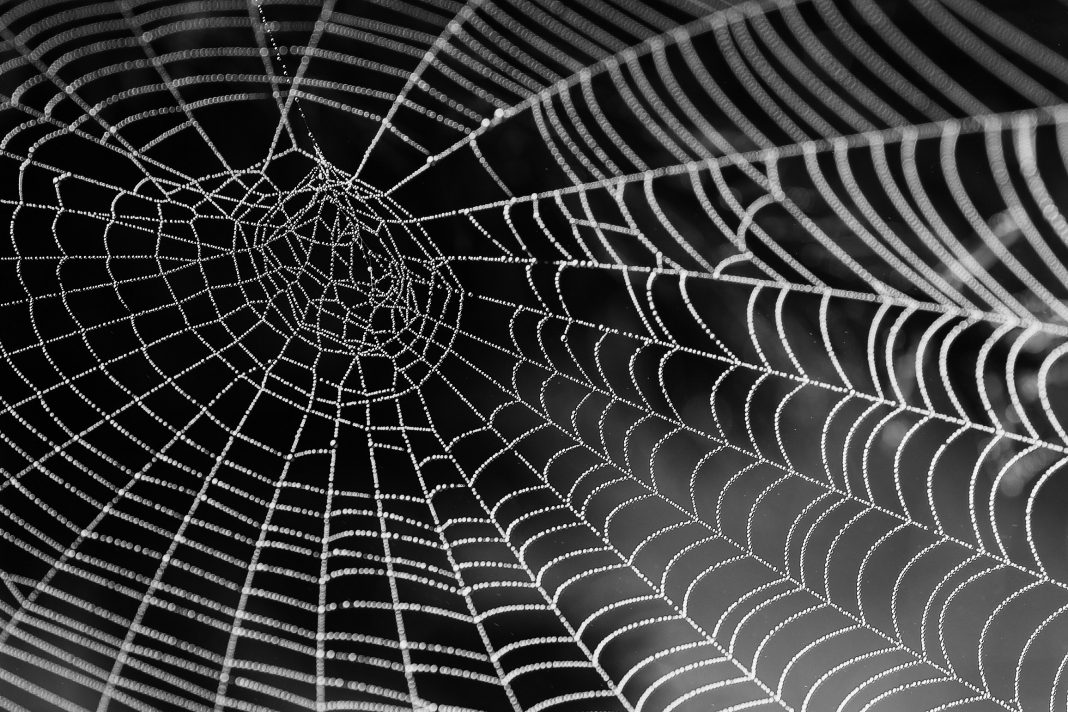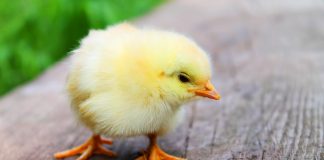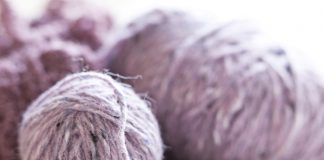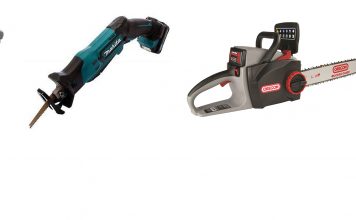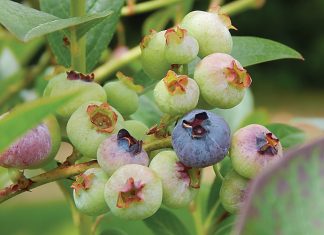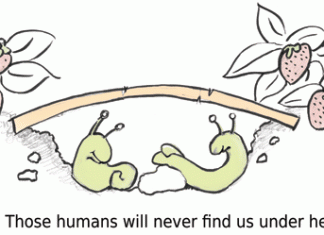| Issue #109 • January/February, 2008 |
Every landowner and homeowner creates the perfect environment for spiders. Not intentionally, of course, but spiders seem to like all the little nooks and crannies created from how we store our equipment, tools, hay, feed, supplies, and other items. Spiders are especially fond of our woodpiles, storage bins, closets, and tack rooms. They love our homes, gardens, orchards, flower beds, and landscaping. They live everywhere we do except Antarctica.
For the most part spiders are a good thing. These creepy crawlies are a normal everyday part of life and eat tons of other insects. Without them we would be up to our ears in other insects who would eat us out of house and home. We humans think we own the world, but in reality it would really belong to the insects if it weren’t for the birds, bees, bats, and yes, spiders.

Even though we cringe at the thought of spiders, they have been immortalized through movies, songs, and stories. Who hasn’t taught their children the Itsy Bitsy Spider nursery rhyme or read them the story of Charlotte’s Web. This story did wonders to help erase centuries of myths and legends and people’s innate fear of this creature. Everyone at one time or another has marveled at the wonder of a beautiful cobweb covered in dew and catching the rays of the sun.
There are more than 38,000 different types of spiders around the world but only a few of these are potentially harmful to people. Here in the continental United States there are only a few types of poisonous spiders we need to be able to identify and to teach our children to be able to identify and avoid. To simplify things, group all spiders into two categories. You have 38,000+ types in the good category and only a few in the bad category. The good category is too overwhelming and unless you are a spider enthusiast or arachnologist, just accept them for what they are and forget about it. Now we are down to just a few spiders in the bad category. That’s manageable and something we can take the time to learn and be able to identify.
Here in the Southeast our family is concerned about teaching ourselves and our grandson to identify two spiders in the “bad” category. They are the most likely to be found in our house and outbuildings. Those two are the Black Widow and the Brown Recluse.

Once you have educated yourself, it is important that you not go on a rampage and start destroying all spiders. No matter how you feel about them, believe that our lives benefit from having them around and learning to co-exist with them. Accept them for what they are and give them a wide berth when you can. When you can’t, simply destroy their webs to encourage them to move elsewhere. Removing their food source will also discourage spiders from setting up housekeeping in your barns and outbuildings. You can place pheromone flytraps to control flies, which are a favorite food source of the spider. Another way to help control spider populations is not to destroy mud dauber wasps’ nests. These predator wasps prey on the spider’s eggsacks and are people friendly. Regular maintenance of your feed and storage areas will also help discourage spiders from moving in. Leaf blowers are great tools to clean out dusty areas where spiders like to hide. They like quiet, undisturbed areas with little or no traffic. Once they are disturbed they will usually get insulted and vacate the premises.
Normally I don’t pay much attention to spiders. As long as they are not in my face I’m fine with them, but I don’t hesitate to destroy them when they become unwanted squatters. Recently, I went to use one of my plastic watering tubs in the barnyard. When not in use, I overturn them to prevent stagnant water which attracts mosquitoes and the chance of West Nile Virus. When I overturned the tub I discovered a spider had set up housekeeping there. I immediately knew this was an unusual spider and upon closer inspection, I found that it was the Black Widow. I had never seen this spider before but I have seen pictures. Trying to avoid one bad thing, I created the perfect environment for this harmful spider. Sometimes you just can’t win for losing! I didn’t find any egg sacks so hopefully I discovered her before she got her house in order and started her family.
The Black Widow
The Black Widow is a very glossy black with a smooth round body about the size of a pea. The most distinguishing feature is the bright red hourglass shape on its abdomen. Typically she builds her web close to the ground and in a closed, protected, undisturbed area. She never leaves her web and is usually found upside down near the center. She will make her egg sacks and place them near the edges of the web where she can protect them. She may be accompanied by the smaller male, but in most cases once she has mated she will usually kill and eat the male. One mating will last her a lifetime so she no longer needs her mate. Hence the name Black Widow. If the male is allowed to live after mating he is rendered harmless and has to depend on the female for food. He is no longer able to produce venom and kill his own food. The venom of the Black Widow is a neurotoxin and affects the central nervous system. Per volume it is more toxic than that of the cobra, corral, and rattlesnake. Bites are seldom fatal but will require a trip to the hospital for treatment to prevent breathing difficulty and muscle spasms. In all the reported cases about 5% have been fatal. Once you are able to identify this spider, mentally associate it with the skull and crossbones.
|
Your chances of being bitten by a Black Widow are small but it is possible, especially if you have them on your property. In most cases you will first see the web which will alert you to the fact there may be a spider as well. Once you discover a Widow, destroy her and then search for her egg sacks and destroy them as well. There may be more than one. Unlike most spiders who die after completing their egg sacks, the Widow can live as many as three years. There is a very similar spider called the Redback which is almost identical to the Black Widow except that it has a red slash or bar down the back. At first glance you would naturally assume that it is a Black Widow. While you may not want this spider around your barn or buildings, there is no need to be concerned.
Like many of us, I have little ones running around the property. They could just as easily have turned over this watering tub and crawled in to play, as all kids will do. Since I was able to identify this spider, I now know that a little spider patrol may be in order. There is never just one of anything. My six year old grandson got his first lesson in spider identification right after this discovery. We don’t want our children to be terrified and run screaming when they see a spider, but they do need to gain a healthy respect and learn how to react when they do see one. The Black Widow is well worth the time to get to know and be able to identify.
The Brown Recluse
The second in the bad category is the Brown Recluse spider. It is highly unlikely that you will ever see this one or it will be too late. It does not build a web but prefers to hunt at night. It searches for dead insects but will attack live ones as well. I call it the buzzard of the spider world. It likes to live in our heated homes and garages. It hides in our closets, clothes, shoes, and behind our pictures. Most people are bitten in their beds at night or when they put on their clothes. The venom from this spider is necrotic. It destroys the flesh at the site of the bite and is very difficult to heal. Doctors can help to prevent infection but there is nothing that will restore the rotting flesh. What this spider bite can do is ugly.
Adult Brown Recluse spiders are yellowish-tan to dark brown. The most distinguishing feature is the dark brown or black fiddle or violin shape along its head with the neck of the fiddle pointed towards the rear of its body. They have long, thin gray to dark brown legs covered with short dark hairs. They are about the size of a quarter.
|
The best way to prevent this spider from setting up housekeeping in your home is first to find out if you have them. Set spider glue traps in several areas of your house and periodically check to see what you catch. Most of your major home improvement stores carry these traps. Once you have identified the spider you can make better decisions about what to do. Don’t overreact and have the house fumigated with pesticides. This spider loves dead insects and will appreciate you taking the time to provide a good supply. Vacuum your closets, under beds, window sills, and storage areas periodically and store extra clothing and shoes in spider-proof bags and cartons. Learn to identify this spider and react accordingly. Forget the other 38,000 but get to know this spider on a first name basis and mentally associate it with the skull and crossbones.
This article is intended only to inform the reader. Spiders are a part of our existence and have been for millions of years. All spiders have venom and will bite if you come into close contact with them. However, their fangs are weak and are not intended to pierce thick skin but rather the soft body parts of insects. If they do bite, the amount of venom will usually be so small that a mild reaction or none at all will be noticed. Spiders are formidable predators in their insect world. Once threatened by humans they are more likely to scurry off than to attack. Most are trappers, hence the cobwebs. They wait patiently for their prey to become entangled in their web. After the prey weakens, the spider will advance and begin to wrap it in a cocoon and then inject its poison. It is usually a very slow process.
But, like everything else, there are two sides to every issue. There have been reported cases where a bite had been delivered well enough to cause a serious reaction and severe complications. The point of all this is that we can arm ourselves with a little knowledge and not have to fear spiders as a whole. That is why it is important to get to know these two spiders in the Southeast states. For those living in other parts of the world, let’s just say you have more than two varieties to get to know.


